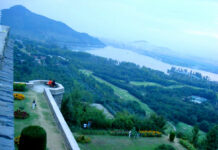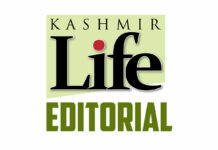An outrage followed the entry of some young men into the Jamia Masjid, apparently to record their sequence with the particular black flags. It was sort of a photo-op that put the TV screens on fire, much before the Kashmir audience grasped the significance of the ‘event’.
Regardless of what was the motive and how crudely it was executed post-prayers, it was seen as a desecration by the society. The reactions that followed and the events that were scheduled are indicators of the hurt that the society has felt.
Jamia Masjid is just not a praying space but one of the inseparable structures defining its history, culture and identity. It defines Kashmir’s Muslim and the Islam it has practised. It symbolises the historic change that Kashmir embraced after being an epicentre of various other pagan culture in the region. This structure is just not a local public space but a historic connectivity of Kashmir’s age-old connections with the vast surroundings in Asia. This is a major structure on which the Central Asian artisans worked on and later Mughals supplemented only to be taken over by the English architects.
On the political front, as is in common knowledge, the Jamia Masjid remained as a key target of the successive regimes. The bids at appropriation led the Sikhs to even convert it into a food storage facility for many decades while justifying it as a potential threat to the occupation. During Dogra rule, the access to the water was interrupted. These regimes would pay handsomely to ensure the clerics pray for the continuation of their rule.
The importance of Jamia Masjid can be understood by the fact that in 1931 when the Dogra rulers opened the shotguns on people, they were all shifted to the lawns of the Jamia Masjid. Had the people taken them to the hospital, many argue, there was a possibility of some of them might have survived the firing.
After the partition, the split in the local politics added yet another layer of the importance of Jamia Majid as it was assumed that it represents a particular political thought. The battle over the spaces of faith for the reasons of politics is the key factor in dividing the political landscape of Srinagar on Sher Bakra basis. Later, when the militancy broke out, it was Jamia Masjid that became the initial targets of the counter-insurgency grid.
Since the area surrounding the Jamia has remained restive for decades now, authorities feel it proper to ensure there are no Friday prayers. Since 2008, this has been happening so frequently that now people check on Fridays’ if it is feasible to have prayers in Jamia.
In this situation, a group of young men attempted to use this platform for a sort of photo opportunity to convey something that Kashmir society has not been supportive of, so far. They may have their own ideas and ideals but Jamia is not the platform for that.









